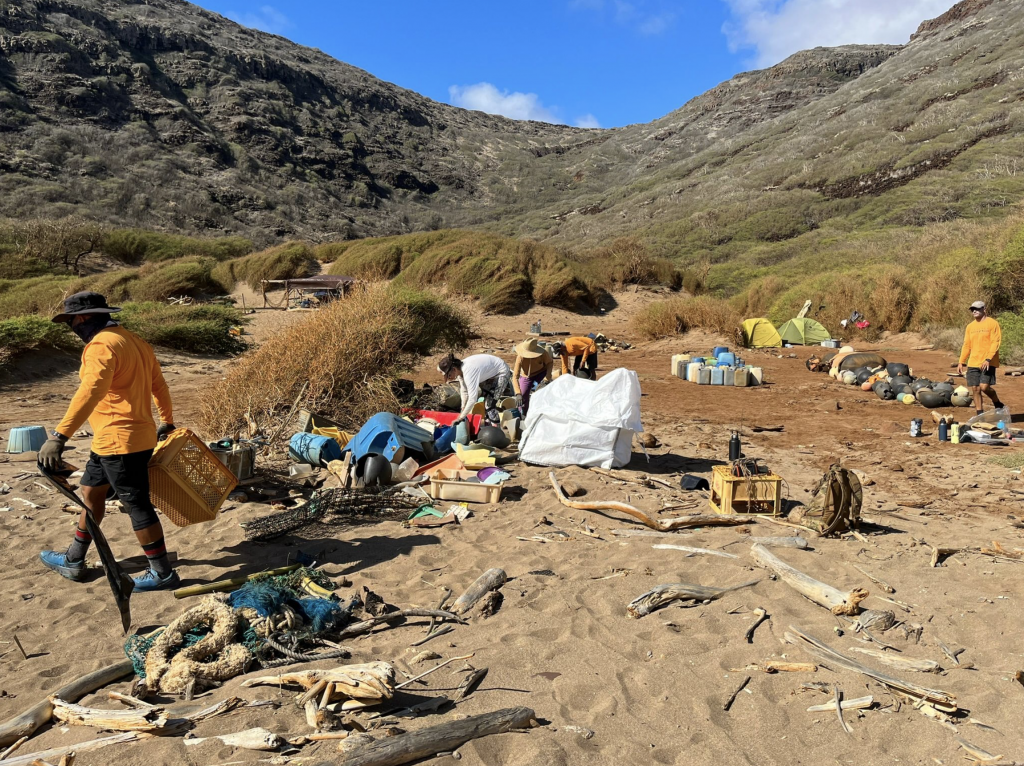Five tons of marine debris removed from Kahoʻolawe
An estimated five tons of marine debris was airlifted this morning from Kaho‘olawe to Maui, with most of it destined for recycling as “new life” products, according to the state Department of Land and Natural Resources.
Every three years, staff from the Kaho‘olawe Island Reserve Commission and volunteers embark on a project to clean a veritable potpourri of trash, mostly plastic, from Kanapou Beach on the eastern side of the island. The final step, getting the tons of rubbish off the island, was delayed for several years due to the COVID pandemic and logistical issues, according to a department press release.
Margaret Pulver of KIRC explains that Kanapou is a North Pacific Garbage Patch in miniature
ARTICLE CONTINUES BELOW AD“Clearly some of the debris is generated locally, but much of it is carried by ocean currents across thousands of miles. When it aggregates at Kanapou, the trash is ankle deep, so we try to conduct these clean-ups every three years or so to avoid having to stand-up multiple operations.”
–Margaret Pulver, KIRC
Twenty-three fabric bags crossed the channel between Kaho‘olawe and Maui in sling loads beneath a Windward Aviation helicopter. Arriving at the KIRC base yard the bags were placed in two large roll-off containers. Pulver said some of the plastics remained on Kaho‘olawe to get a second-life as erosion control structures. The material flown to Maui will be taken by a local non-profit organization to create a variety of second-life products.
Lopaka White, a 17-year-long employee of KIRC, said it’s disheartening to see how quickly and how much trash accumulates on the uninhabited island. “You collect two-tons and then another two-tons shows up. It’s everything including bowling balls, snorkel equipment, fishing gear…you name it we see it,” White said.
Pulver says the accumulation of plastics and discarded fishing line is a modern-day phenomenon. Not too many decades ago driftwood would accumulate at Kanapou but now what arrives is exclusively junk.
“When we see this stuff time after time, it should serve as a reminder to all of us, to think about our plastic use. What can we avoid? What can we reuse and recycle? Until we break our over-reliance on plastics, this will be a never-ending project, not to mention the hazards marine debris poses to ocean animals like humpback whales, monk seals, and turtles,” Pulver said.

























